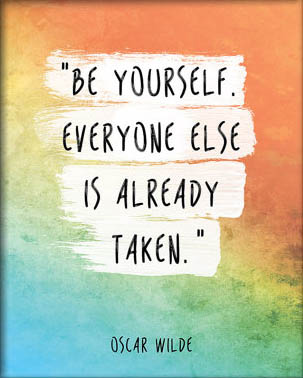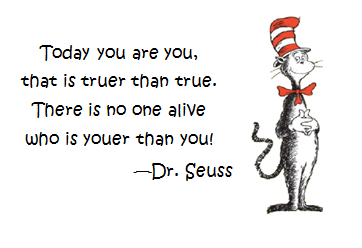
Turning Negative Self-Image Into Self-Empowerment
Fimage
If we were to summarize in a word why people, especially teens, wear masks, it would be fimage.
What’s fimage? It’s short for fear of image.
You don’t have to look far into a group of young people to see examples of all the things they do to create an image. It’s in their clothing, music, language, attitude, hair, make-up, hobbies—even in their choice of friends. Why do people create an image? To keep themselves looking good. Some people spend a lot of time creating and preserving their image. They avoid things that make them look uncool, things that aren’t good for their image. They fear damage to their image. That’s fimage.
As teens go deeper into their exploration of their fimage, they come to a major realization—by constantly fearing what will happen if they don’t maintain their image, life will pass them by. If they want to branch out, try new things, and find out who they really are, they have to let go of their fimage!
In our program, teens have the opportunity to do some wacky things in front of their peers to practice letting go of their fimage. In the context of a bunch of fun high-energy games, they can make crazy faces and ridiculous sounds, or fall on the floor kicking and laughing. Nobody can look cool doing these things—that’s the point. They have the unique experience of looking uncool in front of their peers and being totally okay with it. Facilitators do it with them and take it to the extreme so teens are more comfortable taking it to the middle. In the end they realize that not only did they not get ridiculed or rejected by any of their peers, they actually had a lot of fun.
Teens speak with a lot of enthusiasm about life beyond fimage.
“Letting go of fimage makes your life greater because you let go of the insecurities you have about what others think of you,” camper Bre Steinbarth told us. “You open up and let others see you without your mask. I created my own style, and I’m not afraid to act like myself.”
“It feels good letting go and being able to be a ‘weirdo’ and have no one judge you,” wrote Joe Dugan.
Camper James Ohnoki told us, “It’s like taking a 100-pound bag of rice off your shoulders, like finally being free after being chained to a tree.”
Camper Jordan Walton said, “I was able to show who I truly was for the first time.”
Where the Thrill Isn’t
Everybody’s familiar with the concept of the comfort zone. It’s where we live most of the time. Campers describe what it’s like inside their comfort zones: comfortable, safe, familiar, and . . . boring.
If life inside your comfort zone is boring, then where is life exciting?
Outside your comfort zone!
As teens explore their comfort zones, they realize it’s a great place to feel safe, but no learning or growing can take place there. Outside the comfort zone is the only place where they can take risks, discover, meet people, have fun—and learn.
Masking, tech addiction, conformity, and fimage are about staying inside one’s comfort zone. They’re buffers between us and the fun and exciting times life offers. When teens think of it this way, life outside the comfort zone appeals to their sense of adventure. They’re not into boring. They like excitement.
Life Outside the Zone
Teens know what it’s like outside their comfort zones. They’ve all been there. And they’ve all had positive experiences there: the first time they tried to ride a bike, rollerblade, surf, drive a car. They recall that these moments were uncomfortable, awkward, even a little scary. But what a rush it was when they discovered they could do it!
Campers who understand the difference between life inside and outside their comfort zones understand that they can’t go for these incredible experiences and stay anonymous behind their images, beneath their masks, or behind their computer screens. It doesn’t work. They understand that they have to let go of how they look if they want to take on the adventure.
Once they’ve spent time exploring this idea they’re hungry to experience life outside their comfort zones firsthand. One of our traditions is to put on a familiar piece of music while campers form a circle. It’s a team-building, energizing activity where teens have an opportunity to dance across the circle in whatever manner they choose. For some it’s the first time they’ve been fully themselves in a long time.
This Is It!
Stepping outside the comfort zone is all about seizing the moment—grabbing whatever adventure the present has to offer. The Key of Excellence we call “This Is It!” is about being aware of the present moment—and always making the most of it.
This Key helps teens journey outside their comfort zones because it’s all about embracing whatever life brings, even if—especially if—it isn’t what they expected. When they apply this Key they discover that when they’re in the now, life is more exciting. When they’re fully in the moment they’re vibrant, alive, supercharged. They enjoy what they’re doing more, put more into it, get more out of it, and are better at it.
Masks Off: Who Am I?
As teens emerge from their fimage and step out from behind their masks, they discover that the real surge of confidence comes from getting to know the person who lives behind that mask. As they begin to explore who they really are, they make an incredible discovery: They’re pretty wonderful. They like themselves. They can count on themselves. And they can find other people to like them and count on them. That’s where the courage to live life without masks comes from.
In our programs, teens dig deep into their own identities as they journal and discuss the answers to some thought-provoking questions like Who are my three best friends—and why? What recent accomplishments am I most proud of? Some things about me that, if you knew them, would help you understand me better? The answers to these questions help them get to know themselves. It’s a journey of discovery that will take the rest of their lives to complete. It’s about taking little victories and building on them, about finding out the quirks and dreams and passions that make them unique and celebrating them, about falling in love with who they are. Through this process a downward spiral into negativity can be turned into an upward spiral into the stratosphere.
All young people have the potential for greatness. Incredible things happen when they get a chance to see that greatness for themselves—and then have other people acknowledge them for it.

